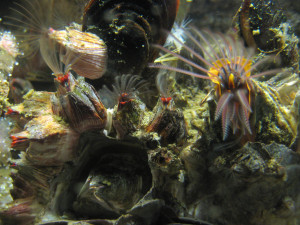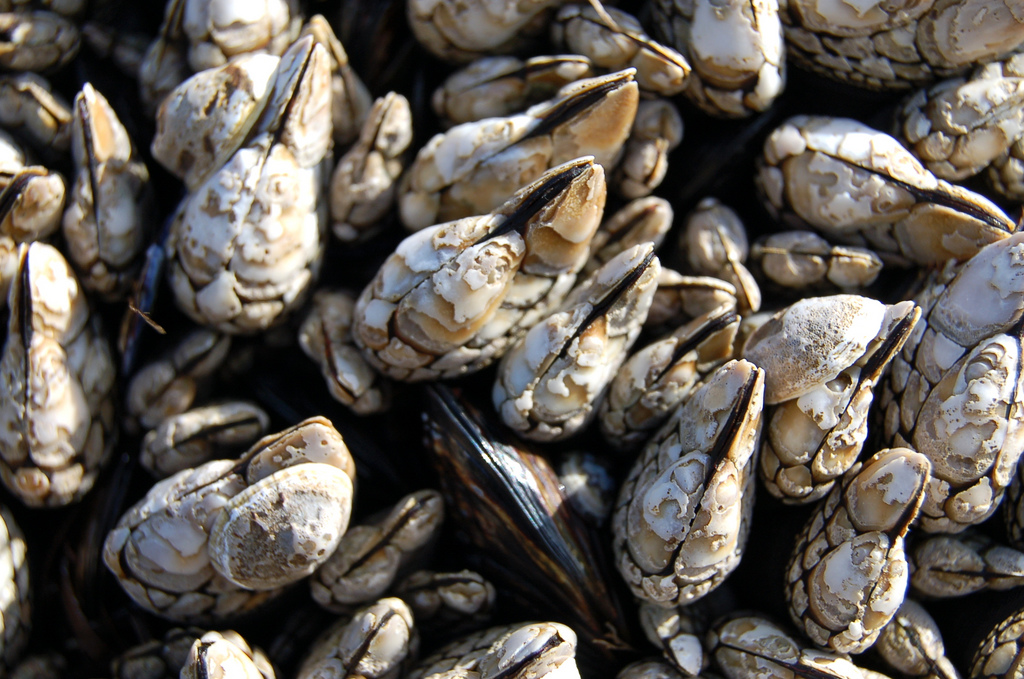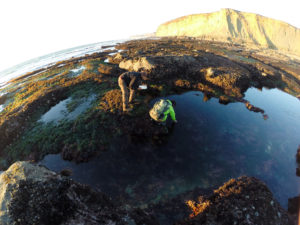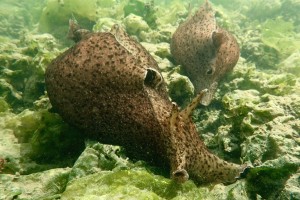Q: How do immobile animals, like barnacles, reproduce?
A: One of the characteristics of animals is motility: They can move. Moving affords organisms the opportunity to avoid predators, get a bite to eat, and reproduce. However, what if you had food delivered to you once or twice a day? Then what’s the point of moving? You just wait for the pizza guy to come. So you could be attached permanently to a fixed point, like say your Barcalounger in front of the TV.
And indeed, this is the case for many marine invertebrates found in the intertidal zone. The classic examples are anemones (which are nothing more than mouths on rocks), mussels, and barnacles. All three, incidentally, belong to entirely different phyla: anemones are Cnidaria, mussels are mollusks, and barnacles, believe it or not, are arthropods. None of these animals need to move to get something to eat; the ocean delivers food (plankton mostly) into their vicinity once or twice a day. So at least the food source is mobile. But to reproduce, well, you have to get together with a mate and if s/he is also a stick-in-the-mud (or a stuck-on-a-rock), then what are you going to do?

Let’s take barnacles. Barnacles are hermaphroditic – they contain both male and female sex organs. What’s the advantage of this arrangement? You’re thinking, “Well, they always have a date on Saturday night.” No, it’s a really bad idea to self-fertilize: Inbreeding results in little genetic diversity. Worms, slugs, snails – slow-moving animals with low rates of encounter – are all hermaphroditic. And you could not get any slower than an adult barnacle!
The biological claim to fame of some kinds of barnacle is they have the longest penis-to-body-size ratio in the world – four to seven times! Which means they can inseminate all the barnacles clustered within four to seven body lengths, and in turn be inseminated by them (party time!). The young are hatched, brooded for about a month inside the adult, and then exuded out the mouth as free-swimming planktonic larvae. These do not resemble adult barnacles in any way. Swimming allows the juveniles to expand the population’s range. When it’s time to settle down, the larva secretes a powerful glue out of its antennae to anchor firmly to the substrate (rock, ship bottom, back of a whale). Then the larvae grow a calcium carbonate shell, and the “feet” they used to paddle through the ocean become the appendages used to filter the ocean for food.
Mussels and other mollusks don’t have quite as much fun: They just release eggs and sperm into the water and hope for the best. Mixing currents do the rest, and their larvae float on ocean currents to a new resting place.
Questions? baynature.org/ask-the-naturalist





